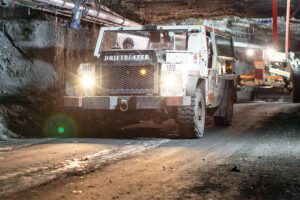The full body harness forms an important part of your personal protection equipment (PPE).
Full body harnesses come in a variety of configurations, from basic to premium, to suit different applications but all are essentially designed to distribute fall arrest forces over the thighs, pelvis, waist, chest and shoulders.
CHOOSING A HARNESS – TOP 3 CONSIDERATIONS
There are two types of harness fittings: the vest style which you put on like a jacket and the crossover harness which is put on over the head. Whichever your preferred fitting style, the questions to ask about each harness are:
1) Is the harness suited to your job?
Harnesses are designed to suit different jobs, industries and environments. Consider the applications you need the harness for e.g: fall arrest, work positioning, suspension, confined spaces, rescue and the environment it will be used in. Does the harness webbing need to be anti-static or flame proof? Do buckles need to be covered for electrical safety? Does the harness have enough gear loops for your tools? If additional features such as tool pouches and suspension trauma slings are required, check that the harness can be customised to accommodate these other features.
2) How comfortable and durable is it?
Full body harnesses are made up of webbing, hardware and in various models, padding. Hardware should be smooth edged to eliminate the possibility of damaging harness webbing. Ensure hardware is sturdy and sized to enable easy attachment of connecting devices, and that connecting hardware is compatible to avoid roll-outs (involuntary disconnection). Webbing should be tightly woven and slide through buckles and hardware without snagging in the process.
A comfortable harness is important – especially if you’re required to wear it for most of your working day. Some features that add to harness comfort include padded shoulder and leg straps, moisture wicking materials for hot or moist conditions and a padded waist belt for extra support.
3) How adjustable and user-friendly is it?
Look for multiple adjustment points on a harness as a correctly fitted harness is crucial to your safety. In the event of a fall, an ill-fitting harness may cause severe trauma to the spine, groin and rectal area so ensure that your harness is adjusted to sit snugly against your body. As a guide to gauge correct fit, you should be able to just slide the thickness of your flat hand between you and the harness at the hips, shoulders and leg loops. If you are required to frequently take your harness on and off, quick-release buckles are a convenient feature. Harnesses should also be labelled with clear instructions.
KEEPING YOUR HARNESS IN TIP TOP CONDITION
Before and after each use, inspect your harness closely for any signs of damage or aging.
- Run hands over all webbing and ensure they are free from abrasion, cuts, burn marks, chemical damage, worn or crushed fibres.
- Check that the sewn areas of the harness are free from cuts, fraying or broken threads, heat damage or stretching.
- Check that each buckle and D-ring is in perfect working condition and free from distortion, cracking, rust, abrasion or missing components.
If you find any defects during the inspection process, the harness should be removed from service and marked unsafe. If there is obvious wear, tag the harness and remove it from service.
In general, harnesses should be washed in warm water with soap or a mild detergent, then rinsed thoroughly in clean water and air dried in a well-ventilated area away from direct sunlight and heat. When not in use, harnesses should ideally be stored in a protective bag or container away from moisture.
Ferno Australia Emergency / Rescue / Height Safety www.ferno.com.au













Add Comment